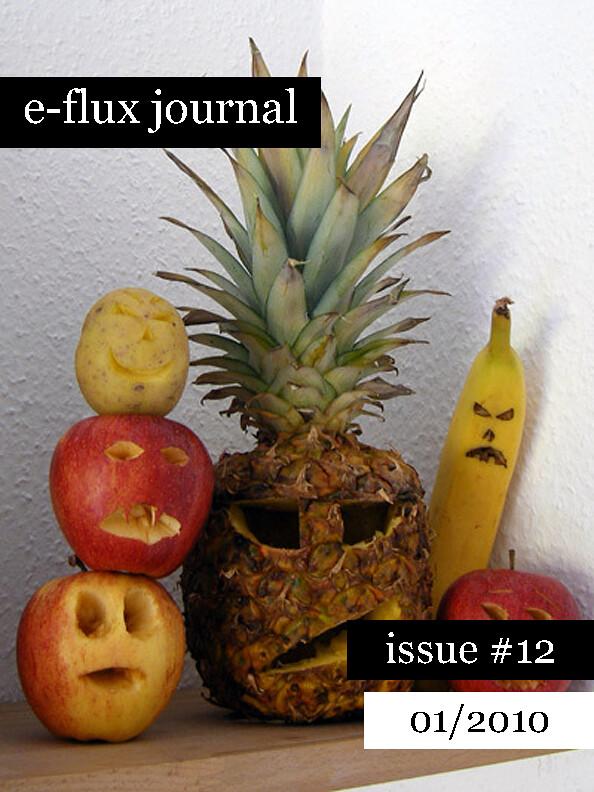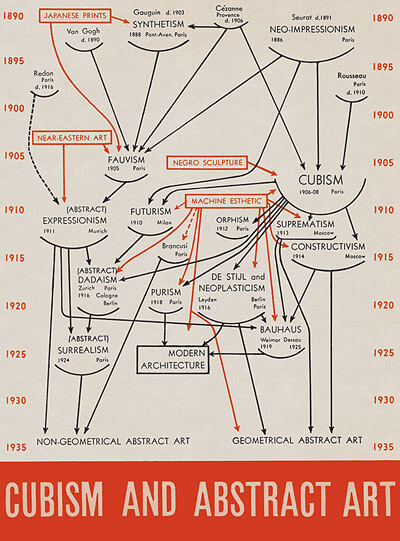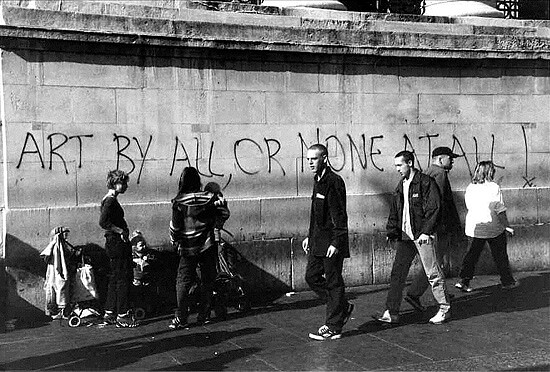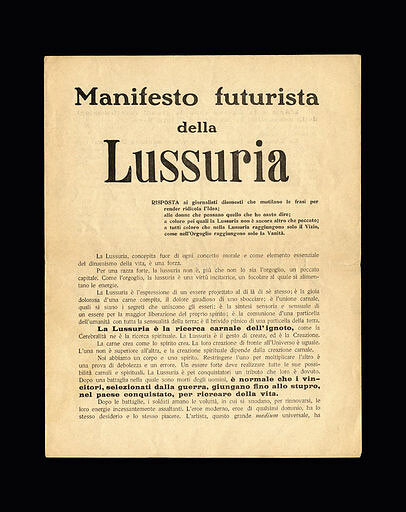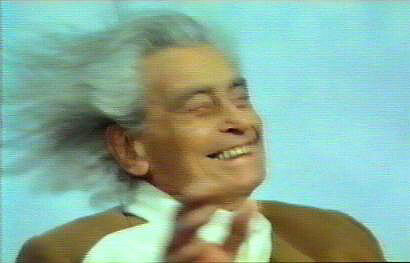On this occasion I will simply quote from several of the responses I received to a questionnaire—subsequently published in October magazine—about “contemporary art.” First, my questions:
The category of “contemporary art” is not a new one. What is new is the sense that, in its very heterogeneity, much present practice seems to float free of historical determination, conceptual definition, and critical judgment. Such paradigms as “the neo-avant-garde” and “postmodernism,” which once…
Issue #12
“What is Contemporary Art?” Issue Two
January 2010
With:
Julieta Aranda, Brian Kuan Wood, Anton Vidokle, Hal Foster, Cuauhtémoc Medina, Hans Ulrich Obrist, Raqs Media Collective, Martha Rosler, and Jan Verwoert
What is contemporary art? First, and most obviously: why is this question not asked? That is to say, why do we simply leave it to hover in the shadow of attempts at critical summation in the grand tradition of twentieth-century artistic movements? The contemporary delineates its border invisibly: no one is proud to be “contemporary,” and no one is ashamed. Indeed, the question of where artistic movements have gone seems embedded in this question, if only because “the contemporary” has…
View List
View Grid
7 Essays
January 2010
1.
It would appear that the notion of “the contemporary” is irredeemably vain and empty; in fact, we would not be entirely mistaken in suspecting “contemporary art” to be a concept that became central to art as a result of the need to find a replacement, rather than as a matter of legitimate theorizing. For above all, “contemporary” is the term that stands to mark the death of “modern.” This vague descriptor of aesthetic currency became customary precisely when the critique of “the…
Of whom and of what are we contemporaries? What does it mean to be contemporary?
—Giorgio Agamben 1
According to common-sense understanding, defining what we mean by the “contemporary” in art presents few problems: anything being produced in the present is always contemporary, and by the same token all art must necessarily have been contemporary at the time of its production and/or initial reception. This much is clear. It is also clear, however, that the phrase…
The Problem and the Provocation
We would like to begin by taking a sentence from the formulation of the problem that set the ball rolling for this lecture series. In speaking of the “hesitation in developing any kind of comprehensive strategy” for understanding precisely what it is that we call contemporary art today (in the wake of the last twenty years of contemporary art activity), the introduction to the series speaks of its having “assumed a fully mature form—and yet it still…
Just a few months before the real estate market brought down much of the world economy, taking the art market with it, I was asked to respond to the question whether “political and socio-critical art” can survive in an overheated market environment. Two years on, this may be a good moment to revisit the parameters of such work (now that the fascination with large-scale, bravura, high wow-factor work, primarily in painting and sculpture, has cooled—if only temporarily).
Categories of…
Standing on the gates of hell, my services are found wanting. For I cannot give you what you want. What you want from me, here, on the gates of hell, is to open the gates and let you in. But I cannot do that. I don’t even see why that service should still be required. Because you have already passed the gates. You are inside. You live in contemporary hell. You inhabit the hell of the contemporary. And now you want me to perform the rite to confirm your passage? And give you reasons for being…
